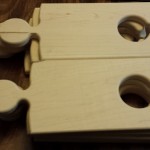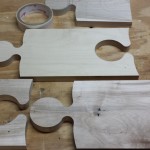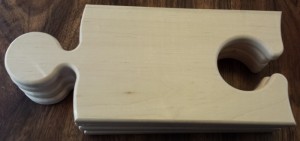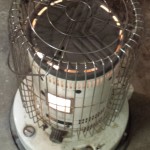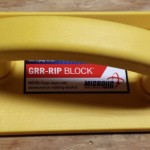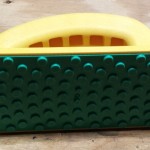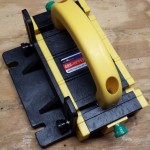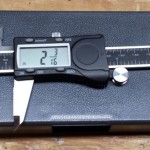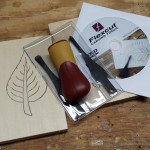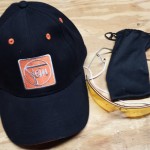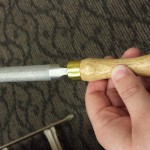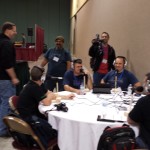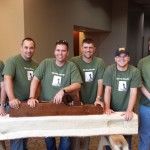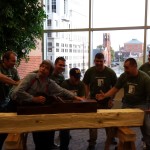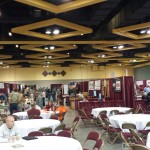 This is one article I have been putting off for a while. The topic of dust collection can be as touchy as discussing politics or religion. However, one of the major projects I took on this past summer was improving the dust collection in my shop.
This is one article I have been putting off for a while. The topic of dust collection can be as touchy as discussing politics or religion. However, one of the major projects I took on this past summer was improving the dust collection in my shop.
First, before I go any further, my disclaimer is that my solution is by no means the best solution out there. There were a couple constraints I had to work within as well, and I was more or less focused on solving a couple specific issues with my setup. Finally, I believe any dust collection setup is like any other aspect of the shop, in that it will be something that will always continue to be improved and updated.
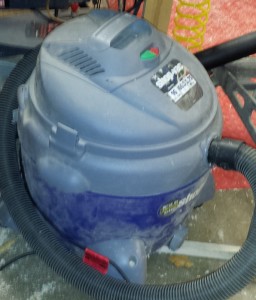 Before I started, I wasn’t completely without dust collection. I had a small 1 hp dust collector, that I used it directly on each machine. This meant either bring the machine (namely the planer) to the dust collector, or bringing the dust collector to the machine itself. This worked, but it got to be a hassle. In fact, it made the process of milling lumber difficult. On top of that my table saw had no dust collection at all. I got tired of the mountain of sawdust that would always develop under my table saw. I also have a shopvac that I use for sanding and general cleanup.
Before I started, I wasn’t completely without dust collection. I had a small 1 hp dust collector, that I used it directly on each machine. This meant either bring the machine (namely the planer) to the dust collector, or bringing the dust collector to the machine itself. This worked, but it got to be a hassle. In fact, it made the process of milling lumber difficult. On top of that my table saw had no dust collection at all. I got tired of the mountain of sawdust that would always develop under my table saw. I also have a shopvac that I use for sanding and general cleanup.
What I would have really liked to have done is put in a cyclone system that I could have ducted to each of my machines. However, I don’t have the ability to run a dedicated 220 line to power it. Also I had promised my wife that I would not make any large tool purchases for the year, as past years I had made quite a few of them.
 To start with the improvements, I took a look at the layout of my tools. The small dust collector is kept behind my band saw as that is where it gets most of use. Also, the jointer is just across the from the band saw, so it made since from both a dust collection stand point, and milling stand point to move the planer However my planer is on the cabinet that stores all my router bits and accessories which I wanted it next to my router table. However, when I put the tool cabinet in place, the planer was in the way. So this gave me the opportunity I needed to move it. My new OSS on its stand was short enough to go under the tool cabinet, so I just simply swapped them and have to take a few extra steps to get to my router bits. I now dedicate the small dust collector to the band saw and the planer, simply by moving the hose between the two machines. This also has significantly improved my workflow for milling boards.
To start with the improvements, I took a look at the layout of my tools. The small dust collector is kept behind my band saw as that is where it gets most of use. Also, the jointer is just across the from the band saw, so it made since from both a dust collection stand point, and milling stand point to move the planer However my planer is on the cabinet that stores all my router bits and accessories which I wanted it next to my router table. However, when I put the tool cabinet in place, the planer was in the way. So this gave me the opportunity I needed to move it. My new OSS on its stand was short enough to go under the tool cabinet, so I just simply swapped them and have to take a few extra steps to get to my router bits. I now dedicate the small dust collector to the band saw and the planer, simply by moving the hose between the two machines. This also has significantly improved my workflow for milling boards.
This, however, left my jointer and table saw without dust collection, and with the layout of the shop, it was hassle moving the small dust collector from machine to machine, which made it way too easy to not use dust collection at all. My next post I will discuss what modifications I made to those machines to improve their dust collection.

